Your Cart is Empty
Orders can take up to 3 weeks at times.


The end to another wild-bird season is here. The temperatures in Oregon are October like. Here in central Oregon, this isn't as bad of winter as the 2016/17. As for Chukars and big game, especially mule deer, that's good news.There are a few notorious winters in the west, like the 1992/'93 and '16/'17, but this one a mild one, and a potentially good one for the carryover of birds and mule deer.
Some call my favorite upland game bird, "The Devil Bird." Others have various expletives to describe this little "missile." I think of the bird on the wing and profile more like an F-16 fighter.
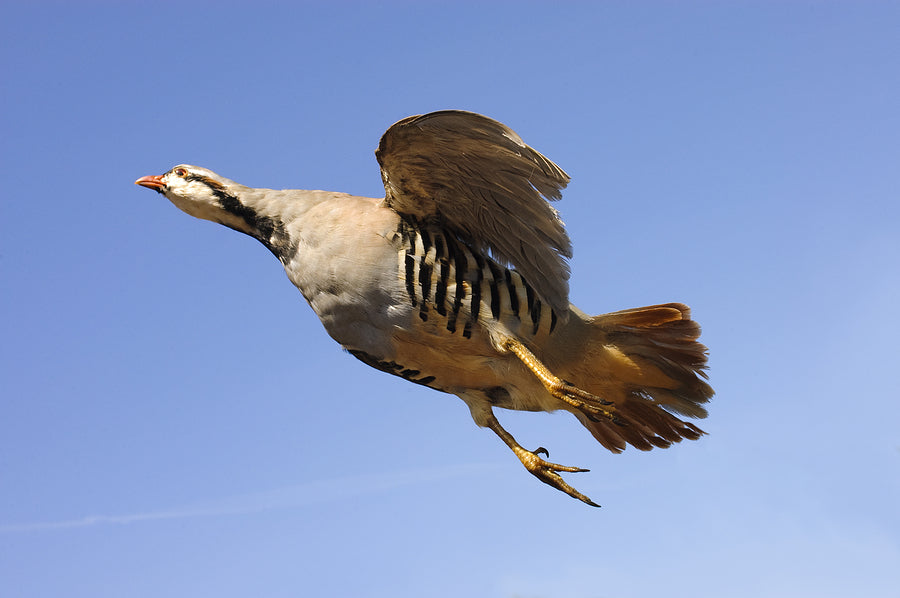
An F-16...
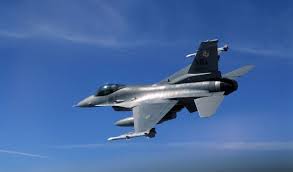
Even the Military has a missile (a Decoy-Drone) named the Chukar. Taken from Wikipedia: Chukar is the name of an Asian species of partridge, introduced to America and as they are hunted for sport, it seems that Northrop felt that the name was appropriate for an aircraft whose purpose in life is to be shot at...
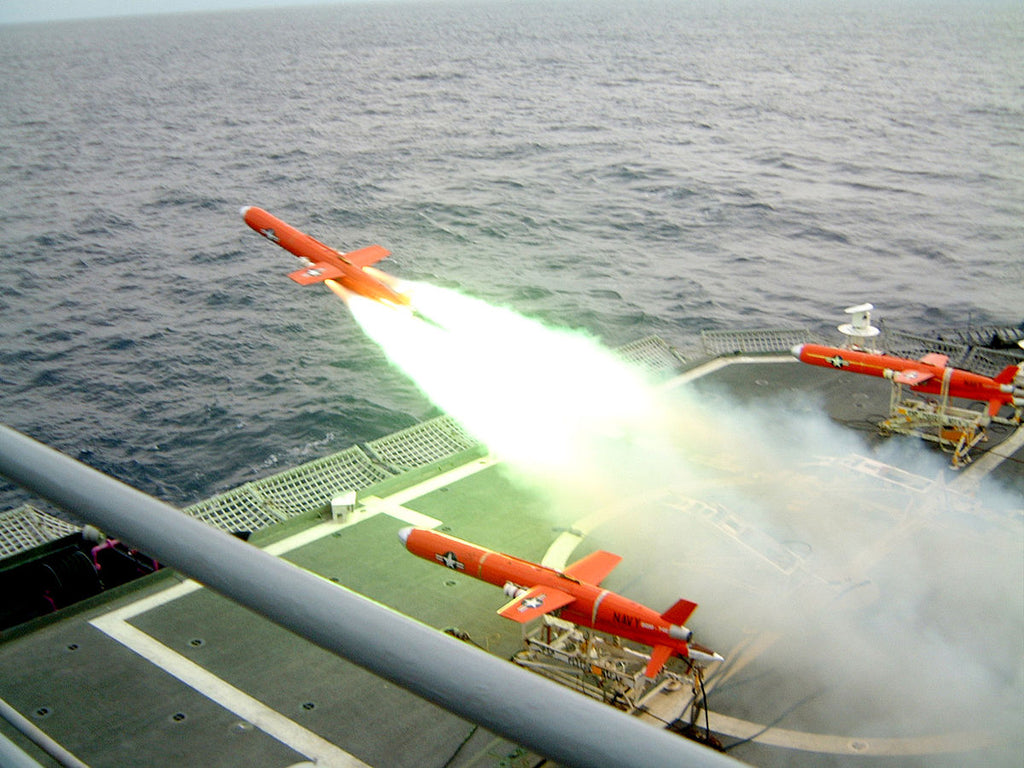
On this January hunt, the winds were calm, the sky just turning pink and the dog's whining was a sign of the anticipation of another Chukar hunt. Keeping my dog in the boat and out of the forty degree water seemed to be a challenge. When we raft, he loves to swim and will run the rapids in his flotation vest--which he's not wearing on the jet boat.
When I solo hunt for Chukars, I don't typically wear Blaze Orange. But when hunting birds with others, even family, I wear Blaze. The photo below depicts the reason I love the stealth effect that camouflage offers for Chukars.
I look for any advantage on these wiley birds. However, when hunting game birds with others I prefer the safety of Blaze Orange. Safety and knowing where my partners are allows me to hunt the landscape in the best way or methods and tactics for the given hunt.

If the lab wasn't visible (above picture), lower center, it would be difficult at best to see my brother in law in camouflage, lower right as we move across the hillsides.
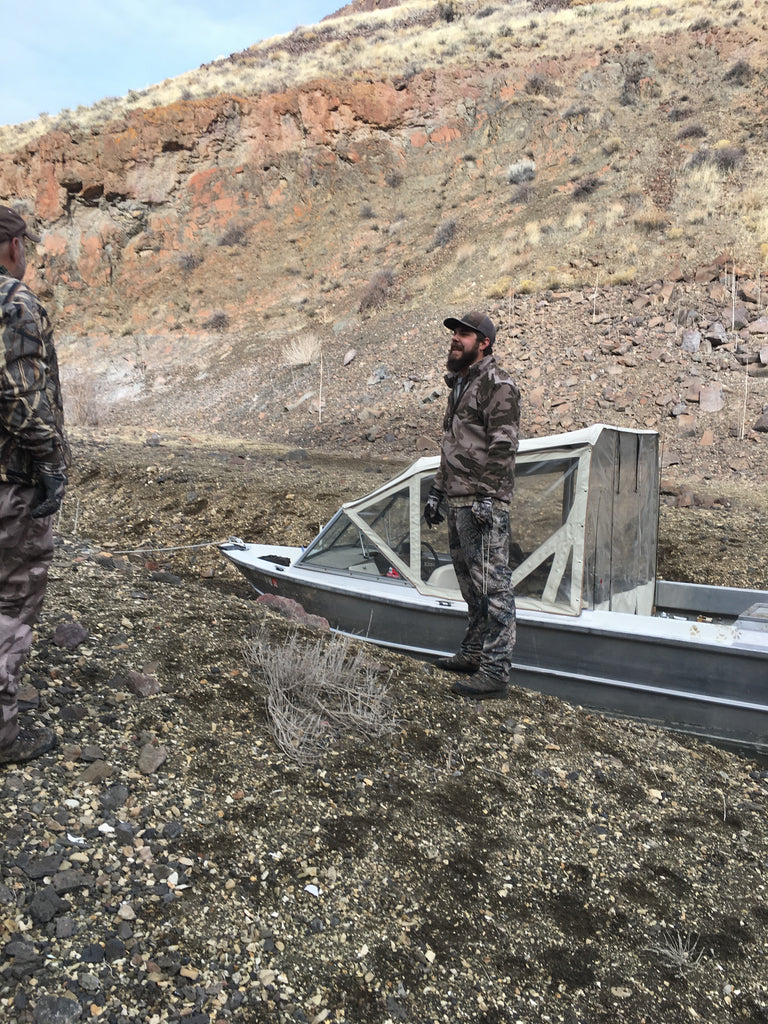
I grew up in southeastern Oregon, near the epi-center of Chukar haunts, and I loved hunting Pheasants in the the upland bird-boom of the 1980's. This was truly a great place and time to grow up and be an upland hunter. Since the age of nine, I followed my father on hunts, learning the ways of the seasoned bird hunter. At age 12, when my Hunters Safety card was placed in my hand, pheasant and Chukar were the first quarry pursued.
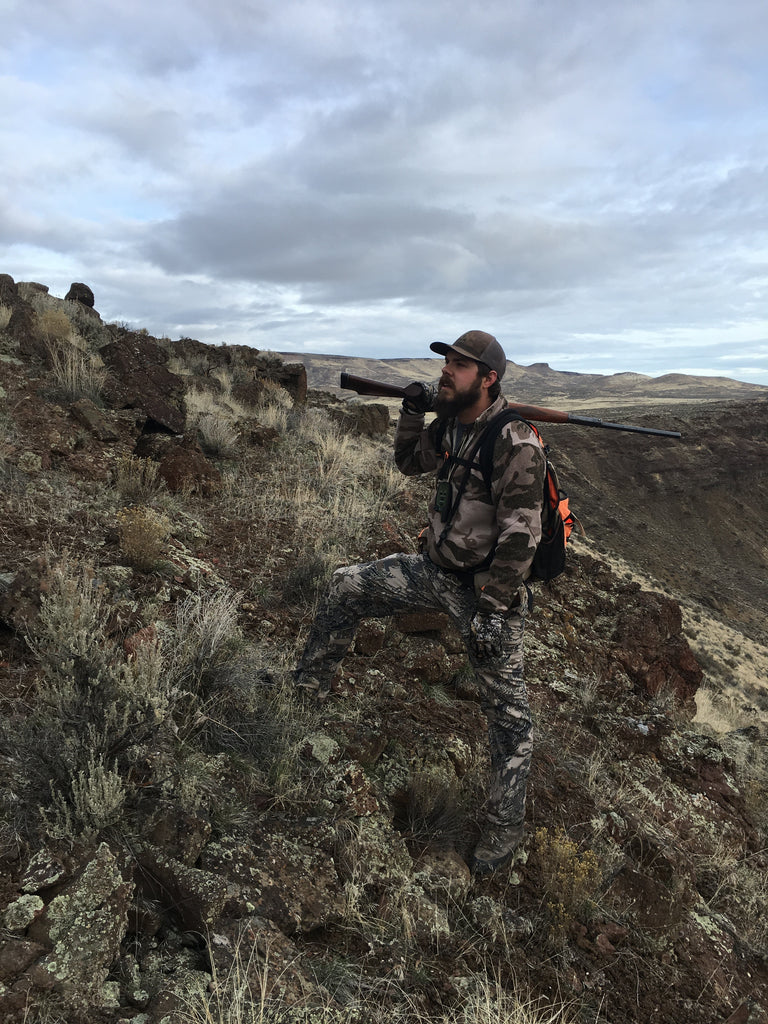
Many Thanksgivings were spent at my Uncle's farm where we had many families come to hunt pheasants on the 40 acre reach along the lower Owyhee River. My Uncle's farm was just minutes drive to the Owyhee Reservoir, where we then would hunt Chukars, many times by boat, as my dad was a boat builder as well.
Some Thanksgiving's were spent with my brother-in-law's relatives on multiple-day Chukar hunts, where eight or ten of us would hunt the Thanksgivinig Holiday week. As a mass of hunters, at times cleaning as few as forty and sometimes as many as eighty birds in a weekend. These guy's were serious hunters of big game and upland birds. For them, taking weeks of vacation from logging at times when the logging was shutdown due to snow, sometime week-long bird hunts were the norm.
Once I obtained my drivers license, I was able to drive my hunting buddies all over the arid high desert as we all pitched in for gas to drive over a hundred miles in a day. My lab and my four-wheel drive Ford Bronco, were my best friends. We'd kill ducks, geese, pheasants, Huns, quail--whatever was legal and flew but, mostly Chukars were our priority.
My childhood home would be dead center in the dark purple on the map below. That, being the prime Chukar range in every direction from my home for 100 miles, even though I mostly stayed close to home due to cost for a high-school student growing-up to travel.
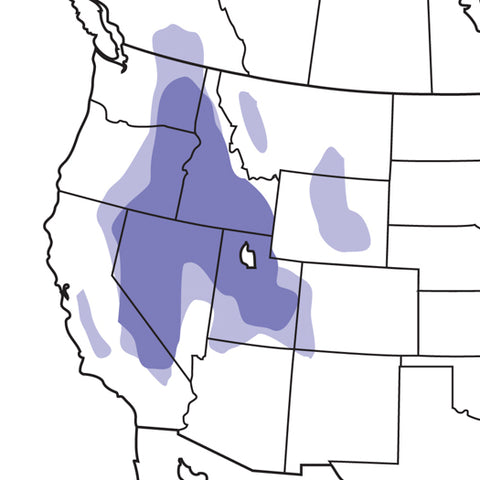
On this season finale end-of-January hunt; we decided to motor to a few hand-picked locations as the winds would began to increase in the early morning with an incoming cold front.
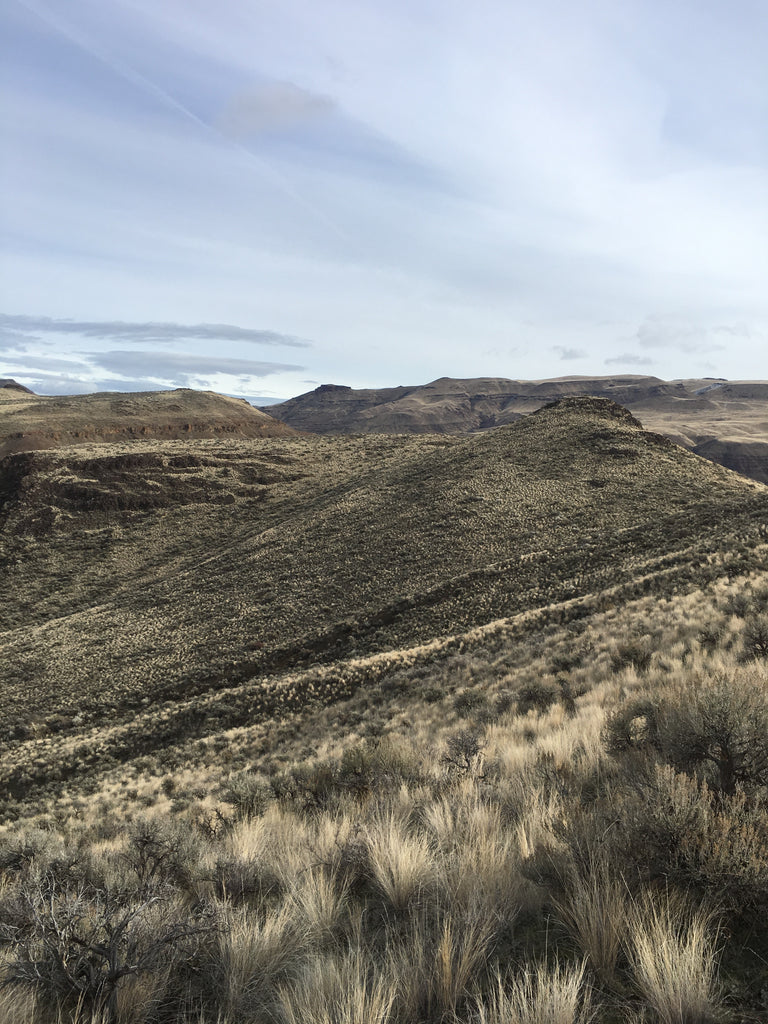
We sought out those leeward sides and rims protected from the 10 to 15 mph winds.
Finding the right landscape with suitable habitat is essential, especially when windy, snowy, hot temperatures or extreme cold. Birds can be predictable.

Varied terrain (shown in the photos) is what I love to hunt. I've always loved to hunt Chukars in a mix of flats, ridges, hollows and rims. I'll pass on the smaller-rock, talus slopes (below photo-left side), as they are horrible to cross unless its really cold, as birds find shelter from predators, the wind and need the thermal energy stored in the larger boulders of some talus, helping them survive cold winter days and nights.
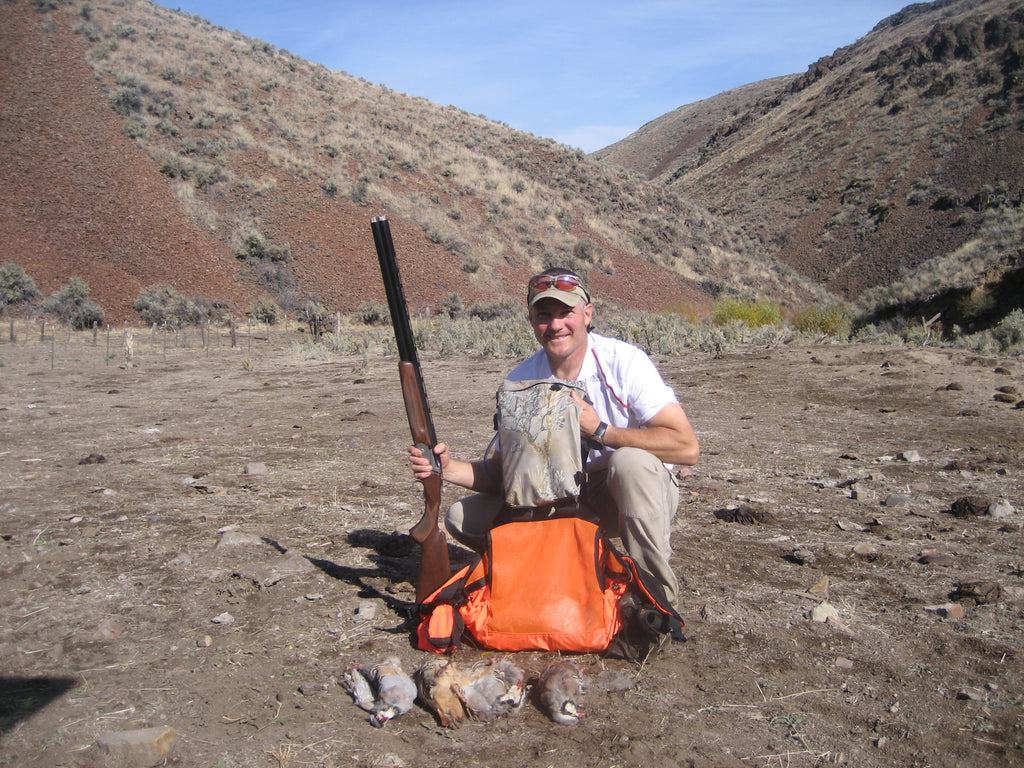
One other fabulous way to hunt the West, is along rivers. Besides a jet boat, raft, Kayak or drift boat, it depends on the season, river or any rapids encountered. Early season is easiest, but late season can be best due to a lack of hunters.
The OPW Proto-type bird bag shown above, made in late 2009, were mostly Blaze Orange and made of 500D Cordura. Cotton vests and upland packs that are not functional, is the primary driver for me designing a functional all-day bird pack. OPW is working on eliminating most of the Blaze and finding the best fabrics possible with the best attributes for an upland hunter--low noise and heavy-abrasion/rot resistance. We will introduce our new upland bird product line in the summer of 2019, just in time for fall upland seasons.
Until next fall, adios my favorite bird!
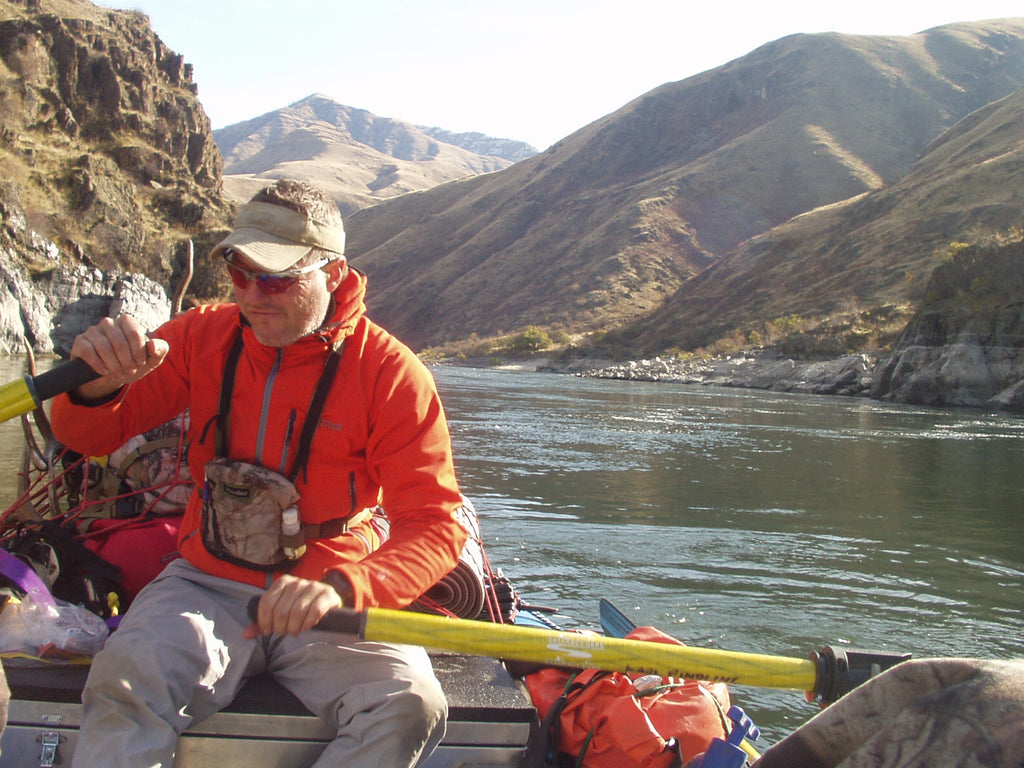
Comments will be approved before showing up.
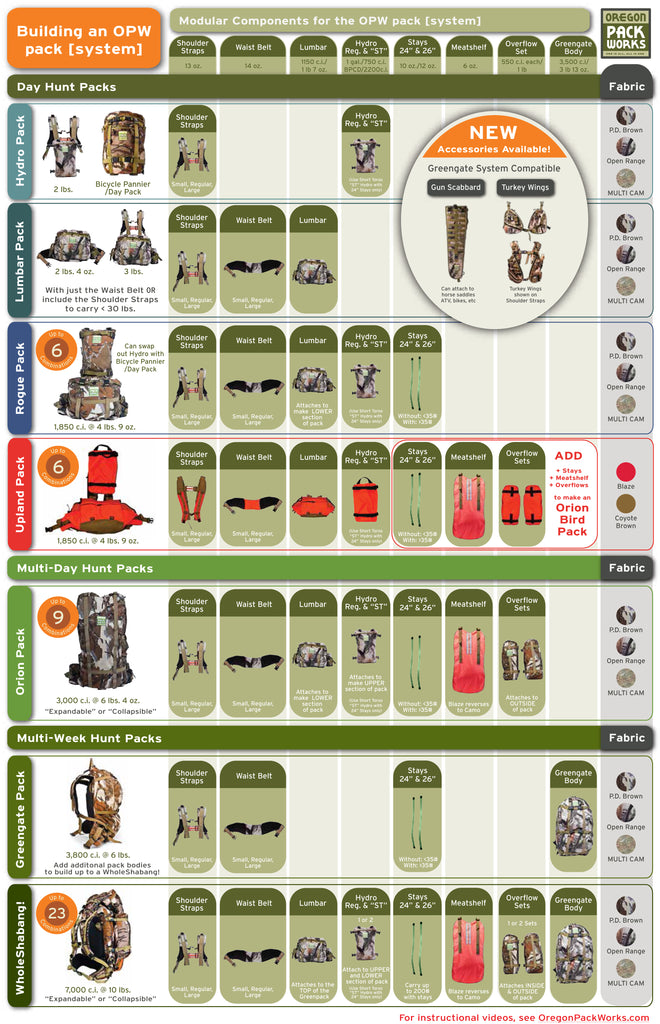

A. Chest
B. Sleeve
C. Waist
D. Inseam